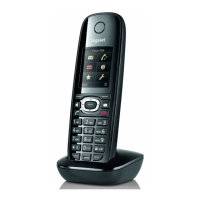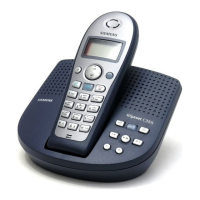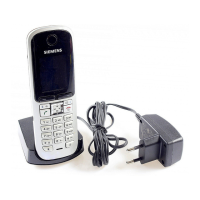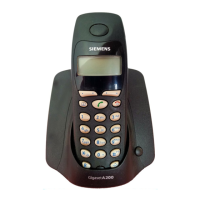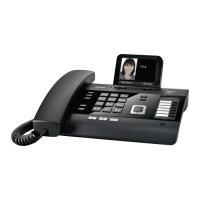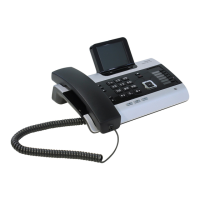31
Using the directory and lists
Gigaset C59H / IM1 EN / A31008-M2150-R101-1-4N19 / direct_charges.fm / 25.05.2009
Version 4, 16.09.2005
Using the incoming SMS
message list (dependent on
base)
All received SMS messages are saved in
the incoming message list.
Using call lists
Prerequisite: Calling Line Identification
(CLIP)
Your telephone stores various types of
calls:
u Accepted calls
u Outgoing calls
u Missed calls
You can view each type of call separately
or gain an overview of all calls. Each call
record contains the last 20 numbers in its
category.
When in idle status, open the call lists by
selecting the
§Calls§ display key or via the
menu:
v
¢
Ê
List entry
New messages are displayed at the top.
Example of list entries:
u List type (in header)
u Status of entry
Bold: New entry
u Number or name of caller
u Date and time of call (if set, page 13)
u Type of entry:
– Accepted calls (
› )
– Missed calls (
™ )
– Outgoing calls (
š )
Press the talk key c to return the calls
selected.
Select the
§View§ display key to access addi-
tional information, including for example
the number linked to the name. If you
have CNIP, then the name and town that is
registered with your network provider for
the calling number is displayed. If the
name and town are not shown, it means
that the caller has not requested Calling
Line Identification or that Calling Line
Identification has been withheld.
Select the
§Options§ display key to choose
from the following options:
Copy to Directory
Copy the number to the directory.
Delete Entry
Delete selected entry.
Delete All
Delete all entries.
When you quit the call lists, all entries are
set to the status "old", i.e., the next time
you open the call list they will no longer be
shown in bold.
All Calls
™ Frank
14.10.09, 15:40
š 089563795
14.10.09, 15:32
™ ...0123727859362922
14.10.09, 15:07
View Options

